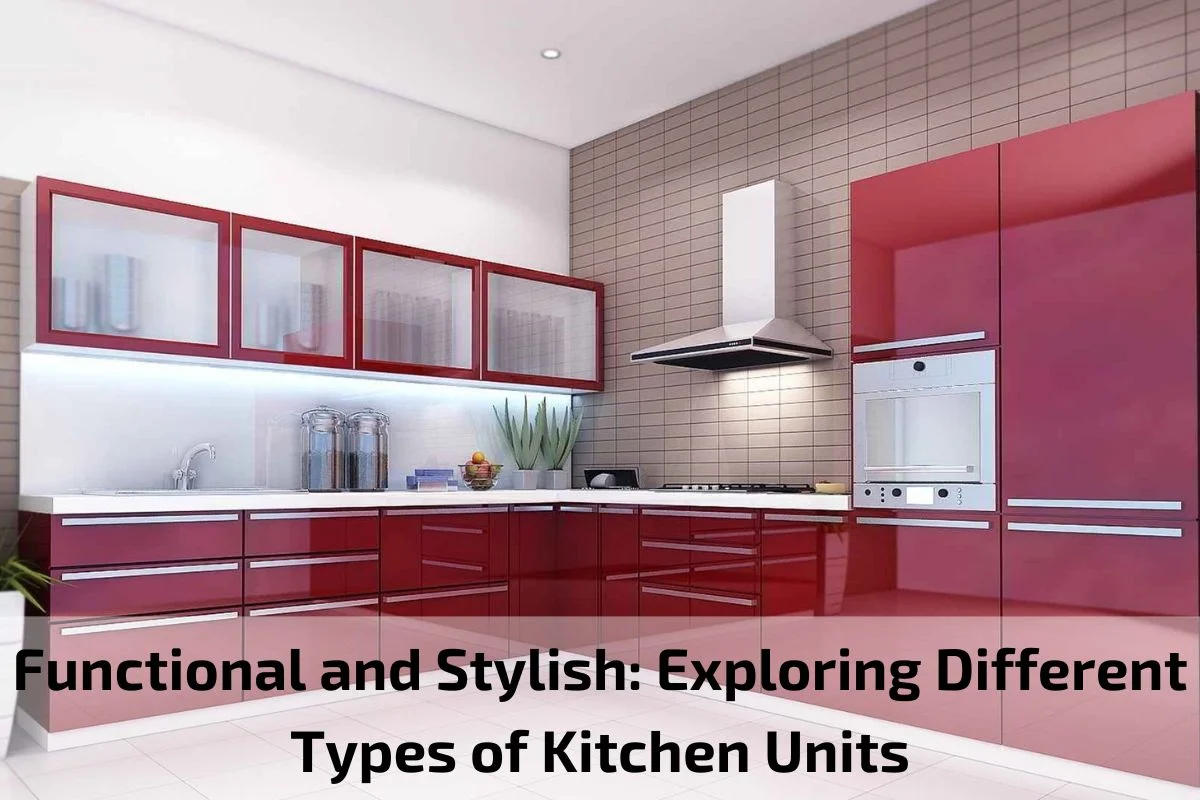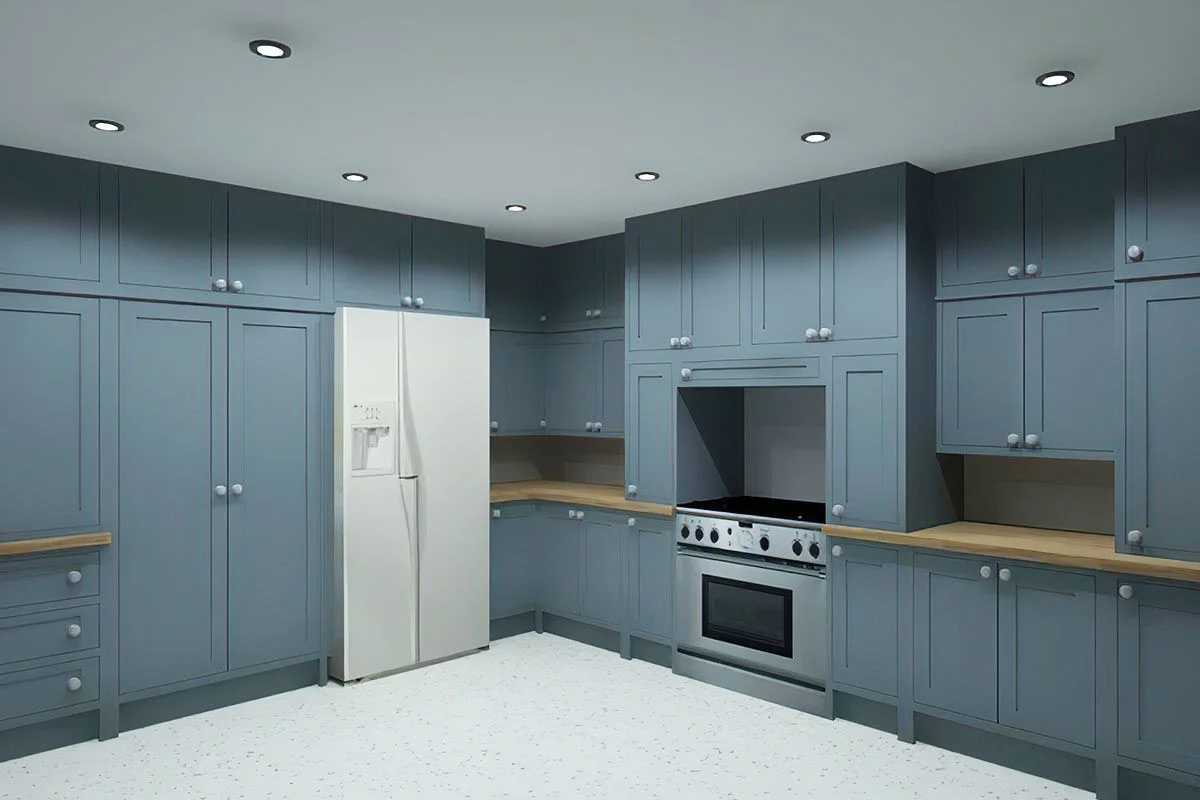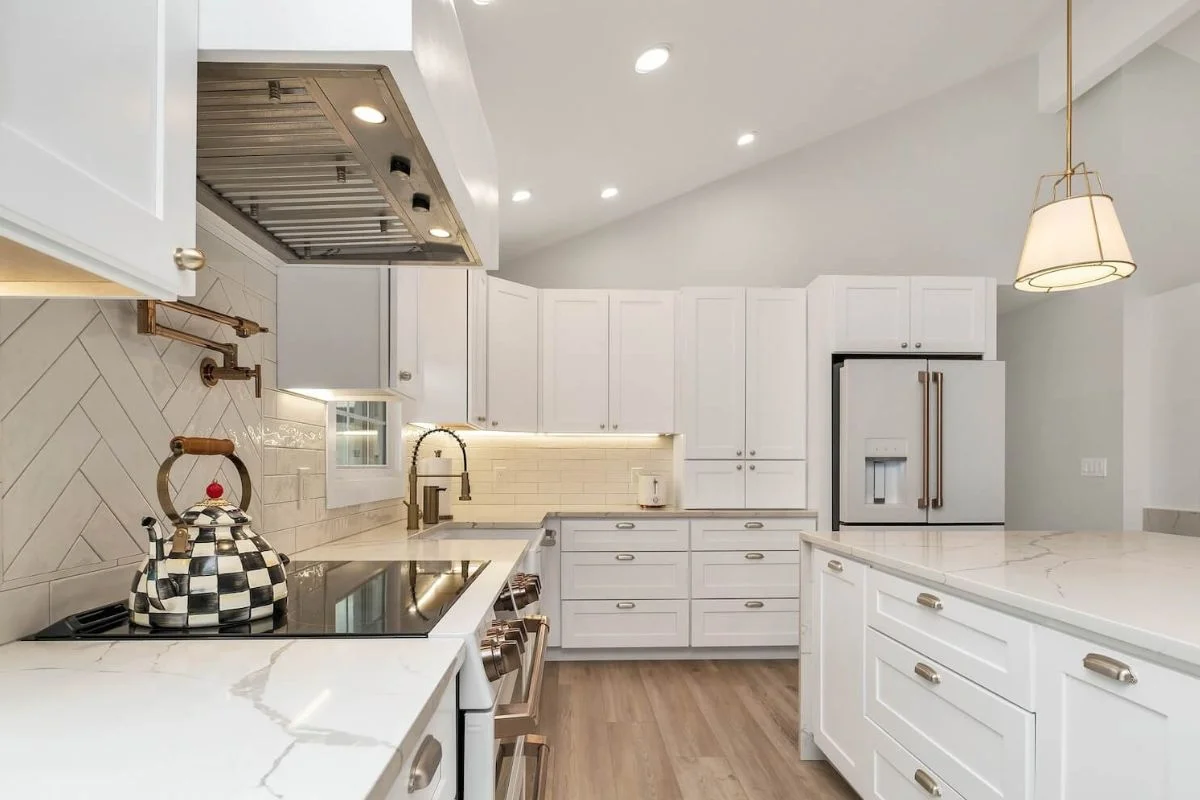Functional and Stylish: Exploring Different Types of Kitchen Units
In the heart of every home lies the kitchen, a space where functionality meets style to create a hub of activity and warmth. At the core of a well-designed kitchen are its units, versatile components that not only provide essential storage but also serve as focal points of design and organization.
In this exploration, we delve into the realm of kitchen units, uncovering the diverse array of options available and the myriad ways they can enhance both the functionality and aesthetic appeal of your kitchen. From sleek and modern to classic and traditional, kitchen units come in a variety of styles, materials, and configurations, offering endless possibilities for customization and personalization.
Join us on a journey as we navigate through different types of kitchen units, from cabinets and drawers to shelving units and pantry systems. Discover how these essential elements can transform your kitchen space, optimizing storage, maximizing efficiency, and elevating the overall design aesthetic.
Definition and Purpose of Kitchen Units
In the realm of kitchen design, “kitchen units” refer to the essential components that make up the storage and organizational elements within a kitchen space. These units are integral to the functionality and efficiency of the kitchen, providing storage solutions for cookware, utensils, pantry items, and other kitchen essentials.
The purpose of kitchen units is twofold: to optimize space utilization and to facilitate efficient organization within the kitchen. By incorporating various types of units such as cabinets, drawers, shelving units, and pantry systems, kitchen units offer homeowners the ability to maximize storage capacity while keeping the kitchen space organized and clutter-free.
Kitchen units are designed to meet the diverse needs of homeowners, offering a combination of storage options that can be customized to suit individual preferences and lifestyle requirements. Whether it’s storing pots and pans in base cabinets, organizing spices in pull-out drawers, displaying cookbooks on open shelving, or stockpiling pantry items in pantry cabinets, kitchen units serve to streamline the cooking process and enhance the overall functionality of the kitchen
Importance of Kitchen Units in Optimizing Space and Organization
Kitchen units play a crucial role in optimizing space and organization within the kitchen, contributing to a functional and efficient culinary environment. Here are several reasons why kitchen units are essential for maximizing space utilization and promoting effective organization:
Maximizing Storage Capacity: Kitchen units offer dedicated storage solutions for a wide range of items, including cookware, utensils, pantry staples, and small appliances. By utilizing various types of units such as cabinets, drawers, and shelving, homeowners can maximize storage capacity and make the most of available space in their kitchen.
Streamlining Workflow: Well-organized kitchen units streamline the cooking process by keeping essential items easily accessible and within reach. By categorizing items and storing them in designated units, homeowners can optimize workflow and minimize time spent searching for ingredients or utensils during meal preparation.
Reducing Clutter: Kitchen units help reduce clutter by providing designated storage spaces for kitchen essentials. By keeping countertops and other surfaces clear of clutter, kitchen units create a visually appealing and organized environment that enhances the overall aesthetics of the kitchen.
Promoting Efficiency: Efficient organization facilitated by kitchen units allows homeowners to quickly locate items and access them when needed. This promotes efficiency in meal preparation and cooking, as ingredients, cookware, and utensils are readily available and easily accessible.
Customization Options: Kitchen units offer customization options that allow homeowners to tailor their storage solutions to suit their specific needs and preferences. Whether it’s configuring cabinet layouts, adjusting shelf heights, or incorporating organizational accessories, kitchen units can be customized to optimize space and organization according to individual requirements.
Enhancing Accessibility: Kitchen units are designed to enhance accessibility, ensuring that items are stored at optimal heights and within easy reach. Pull-out drawers, adjustable shelves, and other features allow homeowners to access items without bending or reaching, making the kitchen more accessible for users of all ages and abilities.
Creating a Functional Layout: Properly designed kitchen units contribute to a functional layout that promotes efficient workflow and ergonomics. By strategically placing units within the kitchen space, homeowners can create zones for different tasks such as meal preparation, cooking, and cleanup, optimizing the overall functionality of the kitchen.
Exploring Different Types of Kitchen Units
In the realm of kitchen design, a variety of units are employed to fulfill storage and organizational needs. Let’s delve into the diverse range of kitchen units available, each offering unique functionalities and contributing to the overall efficiency and aesthetics of the kitchen space:
- Cabinets
Base Cabinets: These units are installed on the floor and provide storage for larger items such as pots, pans, and small appliances. Base cabinets often feature doors or drawers for easy access to stored items.
Wall Cabinets: Mounted on the wall above countertops, wall cabinets offer additional storage space for dishes, glasses, and other kitchen essentials. They come in various sizes and configurations to accommodate different storage needs.
Tall Cabinets: Taller and deeper than base or wall cabinets, tall cabinets maximize vertical space and provide storage for pantry items, brooms, mops, and other tall items. They may feature shelves, pull-out drawers, or specialized storage accessories.
- Drawers
Standard Drawers: These are commonly used for storing utensils, flatware, and small kitchen gadgets. They are available in various widths and depths to accommodate different items.
Deep Drawers: Deeper than standard drawers, deep drawers are ideal for storing larger items such as pots, pans, and mixing bowls. They offer ample storage space and can be customized with dividers or organizers for better organization.
Pull-Out Drawers: Also known as roll-out shelves or slide-out trays, pull-out drawers maximize accessibility by allowing users to fully extend the drawer and access items at the back without bending or reaching.
- Shelving Units
Open Shelving: Open shelves provide easy access to frequently used items and create a visually open and airy feel in the kitchen. They are ideal for displaying cookbooks, decorative pieces, and frequently used dishes or glassware.
Adjustable Shelving: Adjustable shelves can be moved up or down to accommodate items of different heights. They offer flexibility and versatility in organizing pantry items, canned goods, and kitchen appliances.
Corner Shelving: Corner shelves make use of otherwise unused corner space in the kitchen. They are available in various configurations, including L-shaped, kidney-shaped, or carousel designs, and provide additional storage for cookware, dishes, or spices.
- Pantry Systems
Pantry Cabinets: These floor-to-ceiling cabinets offer extensive storage space for pantry items such as canned goods, dry goods, and small kitchen appliances. They may feature adjustable shelves, pull-out drawers, or door-mounted organizers for efficient organization.
Pantry Closets: Pantry closets are standalone units designed specifically for pantry storage. They may feature a combination of shelves, drawers, and baskets to accommodate various pantry items and keep them organized.
Pull-Out Pantry Units: Pull-out pantry units are tall, narrow cabinets that feature shelves or baskets that slide out for easy access to pantry items. They are ideal for maximizing space in small kitchens and keeping pantry items organized and accessible.
Benefits of Kitchen Units
Kitchen units play a pivotal role in optimizing space, enhancing organization, and elevating the functionality of the kitchen. Here are several key benefits of incorporating kitchen units into your kitchen design:
Maximized Storage Space: Kitchen units provide ample storage solutions, allowing homeowners to effectively utilize every inch of available space. Cabinets, drawers, shelving units, and pantry systems offer designated areas for storing cookware, utensils, pantry items, and small appliances, minimizing clutter and maximizing storage capacity.
Efficient Organization: With various types of units available, homeowners can customize their kitchen storage to suit their organizational needs. Cabinets, drawers, and shelving units can be configured and accessorized to accommodate items of different sizes and shapes, facilitating efficient organization and making it easy to locate and access items when needed.
Optimized Workflow: Well-designed kitchen units streamline the cooking process by keeping essential items within reach and organized. By grouping similar items together and storing them in designated units, homeowners can optimize workflow and minimize time spent searching for ingredients or utensils during meal preparation, leading to a more efficient and enjoyable cooking experience.
Enhanced Accessibility: Kitchen units are designed to enhance accessibility, ensuring that items are stored at optimal heights and within easy reach. Pull-out drawers, adjustable shelves, and other features allow homeowners to access items without bending or reaching, making the kitchen more accessible for users of all ages and abilities.
Improved Aesthetics: Beyond their practical benefits, kitchen units contribute to the overall aesthetics of the kitchen space. Sleek and stylish cabinets, drawers, and shelving units can enhance the visual appeal of the kitchen, creating a cohesive and harmonious design that complements the overall aesthetic of the home.
Personalization and Customization: Kitchen units offer endless opportunities for personalization and customization, allowing homeowners to tailor their storage solutions to suit their individual preferences and lifestyle. From choosing materials and finishes to selecting organizational accessories and features, homeowners can create a kitchen space that reflects their unique taste and meets their specific needs.
Increased Property Value: Well-designed and functional kitchen units are considered desirable features in a home and can significantly increase its property value. Potential buyers often prioritize kitchens with ample storage and organized units, making them attractive selling points for homeowners looking to sell their property in the future
Maintenance and Care of Kitchen Units
Proper maintenance and care are essential for preserving the longevity and appearance of kitchen units. Here are some tips for keeping your kitchen units in optimal condition:
Regular Cleaning: Regularly clean the surfaces of your kitchen units using a mild detergent or soap and water solution. Wipe down cabinet doors, drawer fronts, and shelving with a soft cloth to remove dirt, grease, and spills. Avoid using abrasive cleaners or scouring pads, as they can damage the finish.
Dust Removal: Dust the interior and exterior of your kitchen units regularly to prevent buildup. Use a soft, dry cloth or a duster to remove dust from shelves, drawers, and cabinet surfaces. Pay special attention to corners, edges, and crevices where dust tends to accumulate.
Avoid Excess Moisture: Moisture can damage the finish and warp the wood of kitchen units. Wipe up spills promptly and avoid placing wet or damp items directly onto cabinet surfaces. Use coasters or placemats under glasses and dishes to protect the finish from moisture damage.
Protective Coatings: Consider applying protective coatings or finishes to the surfaces of your kitchen units to enhance durability and resistance to stains and scratches. Consult with a professional or follow manufacturer recommendations for appropriate coatings based on the material of your units.
Hardware Maintenance: Check the hardware of your kitchen units, including hinges, handles, and drawer slides, regularly for signs of wear or looseness. Tighten loose screws and lubricate moving parts as needed to ensure smooth operation.
Avoid Heavy Loads: Avoid overloading drawers and shelves with heavy items, as this can strain the hardware and cause damage to the unit. Distribute weight evenly and use shelf liners or organizers to provide additional support for heavy items.
Preventative Measures: Take preventative measures to protect your kitchen units from damage. Use felt pads or bumpers on the undersides of cabinet doors and drawers to prevent them from slamming shut, and install door stoppers or soft-close mechanisms to reduce wear and tear.
Professional Maintenance: Periodically inspect your kitchen units for signs of damage or wear, and address any issues promptly to prevent further damage. Consider hiring a professional for deep cleaning, refinishing, or repairs as needed to maintain the integrity and appearance of your kitchen units.
Conclusion
In conclusion, kitchen units are essential components of a well-designed and functional kitchen space. From cabinets and drawers to shelving units and pantry systems, these units play a crucial role in optimizing space, enhancing organization, and elevating the overall efficiency and aesthetics of the kitchen.





0 comments